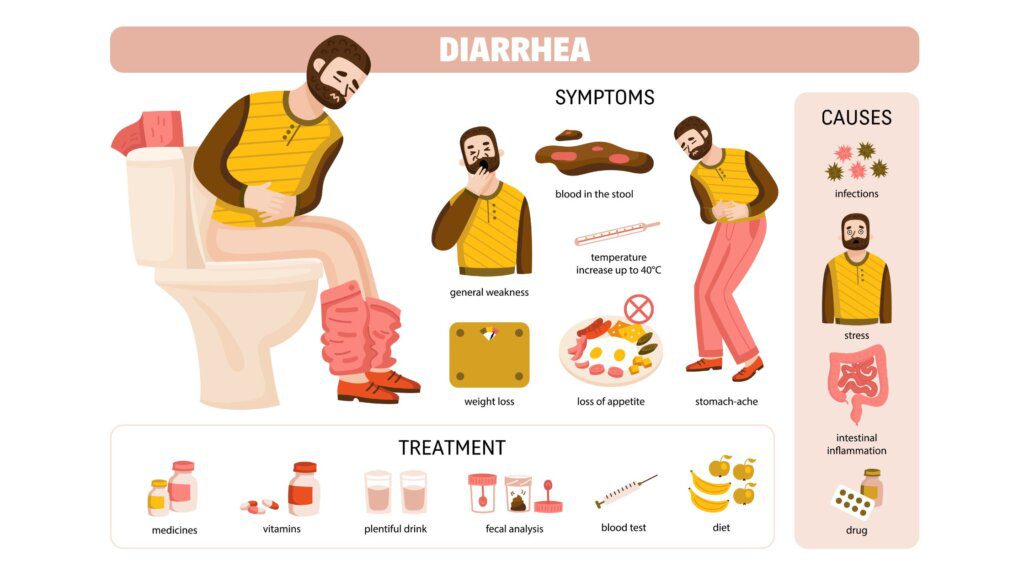Disclaimer – The information in this blog is not intended or implied to be a substitute for professional medical advice, diagnosis, or treatment. All content including text & images contained is for general information purposes only. Ceragem makes no representation and assumes no responsibility for the accuracy of the information. Source – The content is taken from Dr. Ashish Kumar Shrivastava, Senior Consultant Neurosurgeon video. This is totally Dr. Ashish’s general health tip. In case of serious injury, kindly consult the representative expert or physician.
Water a life-giving liquid can also be a life-taking lethal fluid. Around 3.1% of deaths [1] in the world are due to unhygienic and poor-quality water.
The World Health Organization estimates that 80% of diseases [2] worldwide are water-borne.

Water-Borne Diseases and Their Impact
Water-borne diseases are illnesses caused by microscopic organisms, like viruses and bacteria, that are ingested through contaminated water or by coming in contact with feces. Water-borne diseases are very common if cleanliness is not maintained.
The pathogenic microorganisms, their toxic exudates, and other contaminants together cause severe conditions such as cholera, diarrhea, typhoid, amebiasis, hepatitis, gastroenteritis, giardiasis, campylobacteriosis, scabies, and worm infections.

01. Diarrhea
The most common of all water-borne diseases, diarrhea, mainly affects children below five years of age.
The symptoms include dizziness, dehydration, pale skin, and loss of consciousness in severe cases.
It usually lasts for a couple of weeks and can turn out to be fatal if it goes untreated.
02. Typhoid
Typhoid fever is caused by bacteria transmitted via contaminated water. The patients typically suffer from prolonged episodes of fever, loss of appetite, nausea, headache, constipation, and loss of body weight.
Prompt attention is needed to cure typhoid in the patient and to prevent the spread of this contagious disease.

03. Cholera
It is mainly caused by bacteria via the consumption of contaminated food or drinking water. The symptoms include diarrhea, vomiting, fever, and abdominal cramps. Cholera occurs predominantly in children, but can also affect adults.
It possesses a mortality rate that is alarmingly high among water-borne diseases.
04. Hepatitis A
This condition mainly affects the liver and is caused by Hepatitis A virus. The route of contamination is usually oral, while it also spreads through physical contact with an infected person.
Hepatitis A patients manifest common symptoms such as fever, nausea, and vomiting, but can suffer severe complications if they’re not treated in time.
Final Words
Skin diseases can also spread through water. Like scabies, there is a lot of itching or a rash may occur or skin falls off, if there is an infection of streptococcus.
There are many other types of chemicals, especially the chemicals that come out from the factories, like lead, liquid waste, etc., such specific things also go inside the water, in the rivers, and the ponds.
Because of these chemicals, water also becomes victorious. If we are using water that has not been cleaned, poisonous substances go into it.
They enter the body and they cause many diseases and their treatment also becomes very difficult, sometimes it can be fatal, these things can also have a bad effect on our body.
Clean water is a prerequisite for reducing the spread of water-borne diseases. It is well recognized that the prevalence of water-borne diseases can be greatly reduced by the provision of clean drinking water and safe disposal of faeces.
Water is disinfected to kill any pathogens that may be present in the water supply and to prevent them from growing again in the distribution systems.
Footnotes
[1][2] https://www.narayanahealth.org/blog/effects-of-water-borne-disease-in-health-and-its-prevention/
